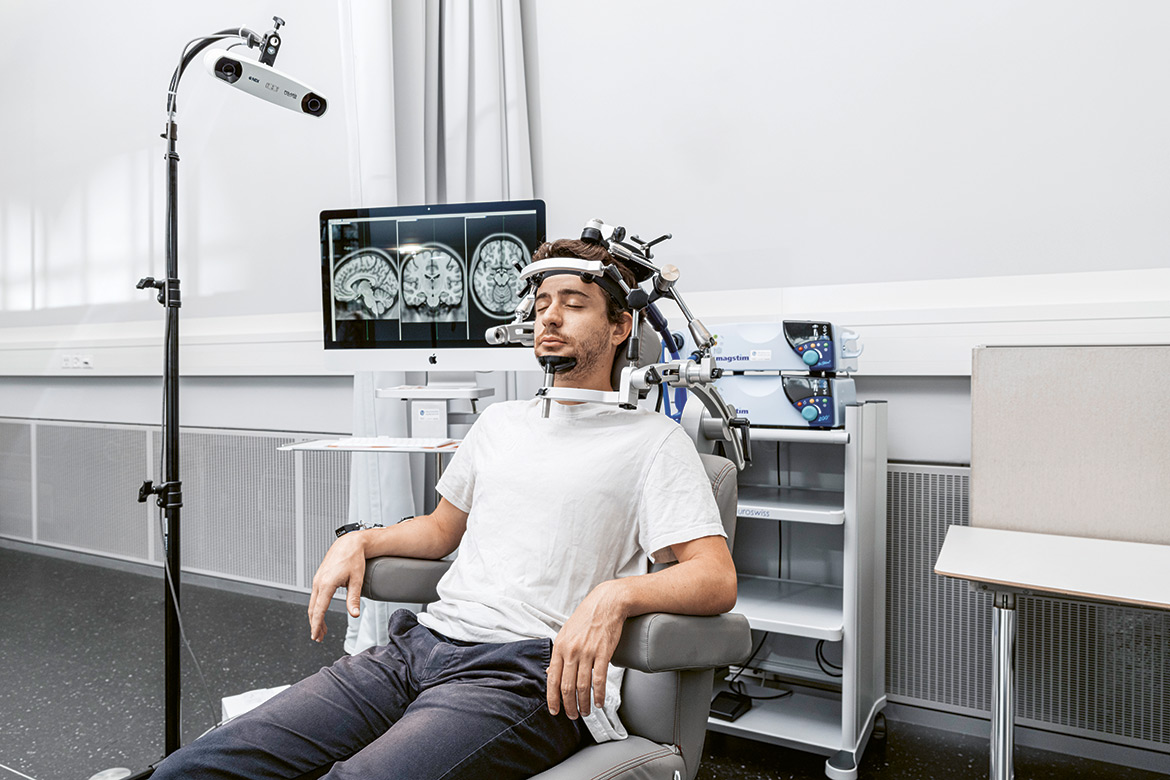The dual-use joker card
Swiss universities don’t like to talk about weapons research. They argue that even research intended for civil purposes could always be put to military use.

Toy gun, 2014. Made by a visitor to Max Brück’s workshop at the Offenbach University of Art and Design. The topic: replicating toy weapons from childhood. The response to the workshop was similar to the reactions provoked by the weapons themselves: a mixture of fascination and repulsion | Photo: Janine Bächle
Should a university be allowed to develop weapons and acquire knowledge that might be used for the purposes of war? This is a complex question, and a political minefield – as becomes obvious when you try and ask Swiss universities to respond to it.
Many are of the opinion that asking about military research is something purely hypothetical. For example, ETH Zurich explains its stance as follows: "ETH Zurich does not carry out any weapons research – projects that are exclusively and explicitly designed to develop or improve weapons. That is why there is no register of any such projects". The University of Basel clearly assigns even less significance to the question of militarily useful research (in fact, it assigns it no significance at all): "The University of Basel focuses on the life sciences and the humanities. In these disciplines we primarily carry out basic research. Whether or not the results of this basic research might be used for military purposes in the near or distant future is at present impossible to tell. This is why weapons research is not a topic here".
An unwelcome question . . .
EPFL is more explicit. It, too, insists that it carries out basic research with a primarily civilian focus, and that it always makes its results public – which, it points out, is not really compatible with military research projects. But when asked, it admits to holding occasional consultations with the State Secretariat for Economic Affairs (SECO) regarding export licences for dual-use goods (products that may be used for both civilian and military purposes) and for 'special military goods', in other words products that may not be employed directly in battle. EPFL keeps strictly to the guidelines, it says.
What is certain is that armaments money does flow into research in Switzerland. The Federal Office for Defence Procurement (Armasuisse) paid some CHF 3.4 million to Swiss universities in 2015, as Armasuisse itself confirmed when asked. If we exclude the universities of applied sciences, the sum is CHF 2.7 million. But again, no information is given on concrete projects. Nevertheless, there is a list of all the institutions with which Armasuisse has research partnerships. These include the Universities of Bern and Zurich, ETH Zurich and EPFL, a whole series of universities of applied sciences, EMPA and. Agroscope. Foreign partners include the University of Oxford and the Technical University of Kaiserslautern. When asked about its current collaboration with Armasuisse, the University of Bern replied that this is for two projects run by the Institute for Infectious Diseases together with the Spiez Laboratory of the Swiss Federal Office for Civil Protection. "Both projects were developed by the Department of Biology and are intended to improve or enable proofs of the existence of microorganisms (in other words, newly emergent, hitherto unknown viruses) and their toxins (botulinum neurotoxin, a nerve poison)". Initially, the University had also stated that "no weapons research projects are being carried out at the University of Bern".
Three years ago, the Sonntagszeitung in Switzerland also revealed that the Pentagon's 'Darpa Program' supported roughly a dozen research projects between 2011 and 2013, to the tune of more than a million dollars. These American armaments monies were paid to institutions including ETH Zurich and the Universities of Zurich, Bern and Neuchâtel. They primarily financed basic research such as quantum information processing and microelectronics. Some of the work was more applied in nature, such as the development of a portable telescopic contact lens or acquiring new knowledge about the evolution of flu viruses.
. . . leads to slippery answers
But why are the universities so cagey when asked about research that is fit for military purposes? One possible explanation lies in the concept of 'dual use' and the fact that the boundary between the civilian and military use of research results is a porous one. This becomes all the more evident, the closer you get to basic research. The University of Zurich refers directly to this: "The University of Zurich weighs up the implications of research proposals with dual-use potential. Such research projects have to be approved by the University's management and the scientific results must be made generally available".
At our universities, many of the research projects that are funded by the military fall under this category. And many who carry out research in this field justify being open to such financing by saying that the civilian use is given priority. A good example is a project at the University of Bern to track down space junk. It is being financed by the US Air Force, but is indisputably useful for the general population, since debris circling in orbit above us can also endanger civilian satellites.
Setting up commissions
It is rarely easy to decide whether to steer clear of certain research projects. However, clear guidelines are provided by those universities with a 'civilian clause', such as the Technical University of Berlin (TU Berlin). Their clause states that "no arms research may be carried out. Furthermore … neither TU Berlin nor its research institutions may accept commissions or donations for arms-related research". The TU Berlin decided on this civil clause in 1991, shortly after having jettisoned the strict regulations on research in the natural sciences put in place just after the Second World War. Since 1946 the Allied Control Council Act No. 25 had forbidden all military research in Germany along with applied research in a series of fields that had both a civil and a military use. These included nuclear physics, aircraft construction, ship building, radar and sonar technology and cryptography. Basic research was exempted from this regulation, but was still strictly controlled.
The civil clause is more than just a declaration of intent. It is a self-imposed declaration of 'unfreedom' in research. At TU Berlin, a commission decides in a 'civil clause procedure' whether a project may be approved. Last year, however, only one project was held back, even though the university, by its own admission, is very explicit in its dealings with this clause. "Every research project has to be displayed in the TU Berlin Research Department and a binding declaration must be made to assure the University that its research goals are exclusively for civilian purposes. If this declaration is not made, then the project is not accepted. With industrial projects, the contractual partner has to confirm in writing, in the actual contract, that the research results will be exclusively used for civilian purposes". The commission decides in individual cases whether all doubts have been unambiguously dispelled. If they remain, however, then the project is rejected.
This procedure is reminiscent of projects with animal experiments and medical studies, where ethics commissions are involved in the development process. In such cases, a commission is powerful enough to halt a project if needs be. This ethical safeguard is not an exercise in tokenism. There is a series of laws that places boundaries on research. In this sense, any assumption that research is not free is not quite correct. However, there is no similarly restrictive law against potential weapons research – not even in Japan, where there is a strong peace movement that is also active at the universities.
Achieving greater transparency
Often, researchers and universities argue that military research would take place anyway – if not at universities, then behind closed doors in specialised research laboratories. In Switzerland, for example, this would happen at Ruag. By its own admission, this company invested CHF 140 million in research and development in 2014 – and it also invested in various research partnerships with industry and universities. But Ruag also stops short of providing greater detail.
In Germany, several universities have followed the example of TU Berlin and have introduced a civil clause. In Switzerland, however, there are no such clauses. What is less surprising is that the 'Group for a Switzerland without an army' (GSOA) regularly campaigns for restrictions on arms research. And the GSOA also knows about the crucial issue of dual use. Thomas Leibundgut is responsible for this topic at GSOA, though he believes that a civil clause would affect only very few projects in Switzerland: "Explicit weapons research plays a marginal role at Swiss universities". He believes that "even just talking about civilian clauses means we've already made a lot of progress".
The GSOA is trying to get students to exert political pressure on university management – such as in Bern, for example. The committee of the student body of the University of Bern is busy acquiring information from the University's management and faculties about the arms research being carried out there. "Our goal is prevention. It's not necessarily about stopping concrete projects", says Corina Liebi, a history student who initiated the process in collaboration with the GSOA.
This situates the question about arms research in a much bigger, political and research context, as it touches on the often-criticised lack of transparency in research funding from third parties. Liebi is hoping to change this: "It would be important just to know exactly what is being researched, and what the deals are".
Not much weapons research
However, Swiss universities are not profiting much from armaments funding. The technology historian David Gugerli was part of a team tasked with writing the history of ETH Zurich, and he had expected to come across a 'military pedagogical complex' in the course of their work. Because at least until the Industrial Revolution, scientists were mostly employed by the military. They had to be able to construct fortifications and had to know about ballistics, and this knowledge was acquired at specialised educational institutions.
But the Swiss researchers were surprised: they did not find any such close entanglement between the universities and the military in Switzerland. Gugerli believes that the reasons for this lie in the founding of ETH Zurich, when a conscious decision was made to set itself apart from the French engineering tradition. The Swiss did not want to build palaces and fortresses and produce armaments, but instead were concentrating primarily on the construction industry and mechanical engineering. In this sense, Switzerland could well be a special case in weapons research, says Gugerli. However, this does not mean that Swiss industry has simply steered clear of arms projects. Gugerli mentions Bührle as a case in point, adding that the really interesting question is whether or not this company actually needed the help of the federal government in order to achieve its success: "In other European countries, technology polices have a distinctly national slant, such as is the case in France. In Switzerland, however, when similar policies were tried out, they had little success".
But whoever looks beyond the boundaries of Switzerland to consider the broader history of science has to admit: without large-scale projects during and after the Second World War, basic research would not be where it is today. The Manhattan Project, in which some 150,000 researchers and technicians worked on the atom bomb from 1942 onwards, set new standards in this regard. As a result, atomic research became a prime example of dual-use technology – and remains so to this day.
Roland Fischer is a science journalist in Bern.




